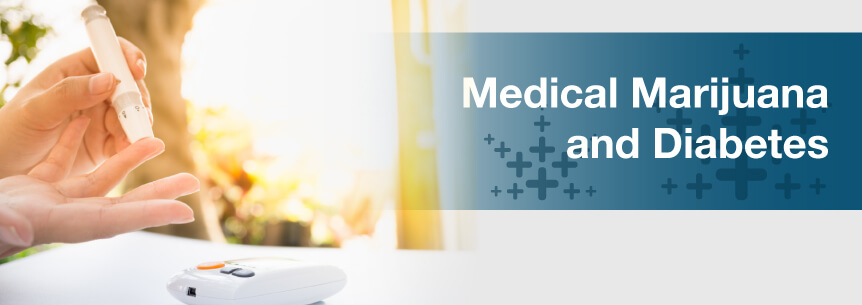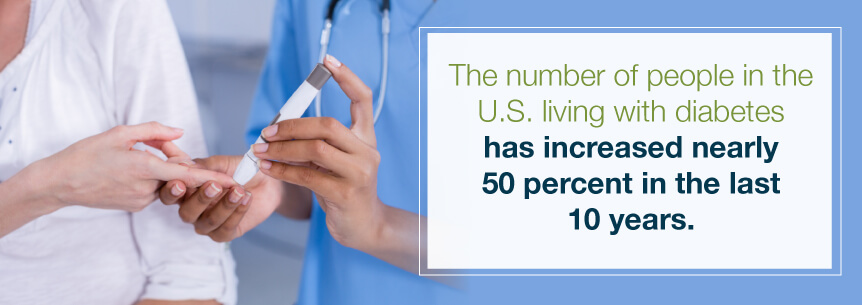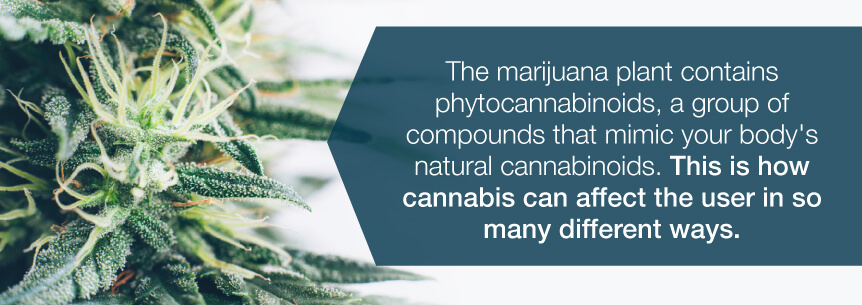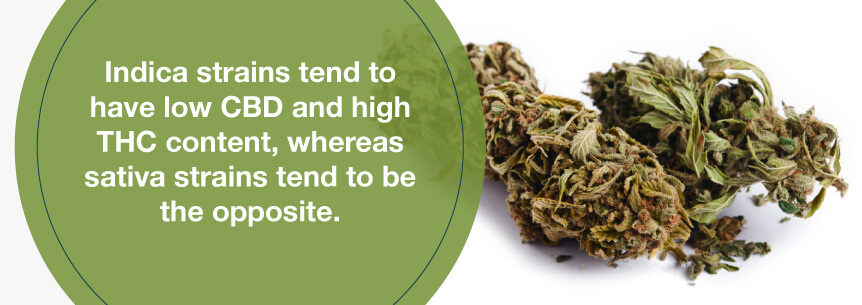
More than nine percent of Americans have diabetes, or over 30 million people, according to the American Diabetes Association (ADA). An additional 84 million have prediabetes, which can progress to type 2 diabetes. While it is possible to live a full, healthy life with diabetes, the disease can also be life-threatening, especially when you don’t manage it.
When you eat, your body converts food into glucose or sugar. The pancreas then releases insulin, which works as a key to open cells and allow glucose to enter the cells for energy use. This system does not work in one of two ways with diabetes. With diabetes, either your body can’t properly produce insulin, or it can’t use it correctly. Either way, it results in poor metabolism of carbohydrates and high levels of sugar in the blood and urine.
The cause of diabetes depends on the type. The reason for type 1 diabetes is not known, but researchers know it’s usually the result of the body’s immune system mistakenly attacking insulin-producing pancreas cells. There is a genetic component to type 1 diabetes as it can run in families.
Type 2 diabetes, on the other hand, has many causes, and the most important of which are lifestyle and genetics. These factors can result in insulin resistance, or an inability to use insulin efficiently.
Some factors can increase the risk of type 2 diabetes. These include:

The number of people in the U.S. living with diabetes has increased nearly 50 percent in the last 10 years, according to the Diabetes Research Institute Foundation. This is likely a result of an increase in risk factors for the disease, like a sedentary lifestyle, a diet high in sugar and obesity.
Medical professionals classify diabetes into three basic categories, depending on the cause of the high blood sugar. They include:
Along with these three types of diabetes, there is also a condition known as prediabetes, which is sometimes called borderline diabetes. With prediabetes, blood sugar levels are high but not high enough to meet the criteria for type 2 diabetes. Men and women who are prediabetic are at risk of progressing to type 2 diabetes.
The documentation of diabetes dates back thousands of years ago, but the cause of the disease did not come to light until the early 20th century, according to the history of diabetes timeline published by the ADA. In 1910, physiologist Sharpey-Schafer’s study of the human pancreas led to the discovery of insulin, which healthy people usually produce. By 1921, Dr. Frederick Banting and his student, Charles Best, were able to extract insulin from dogs and show it could reduce the blood sugar levels in other dogs who had their pancreas surgically removed. The team won a Nobel Prize after purifying the insulin into the first human treatment for diabetes.
Commercial production of insulin began in 1923 when Eli Lilly discovered how to manufacture the life-saving drug on a large scale. Since then, insulin treatments have improved further with better ways to administer the medication.
The most common symptoms of diabetes include:
Type 1 diabetes usually develops quickly. It can cause severe weight loss due to diabetic ketoacidosis, which happens when you have very high blood glucose levels without insulin. People with diabetes may also present emotional or psychological signs of the disease, such as depression, anxiety and irritability.
Diabetes can also have serious complications that develop over time. When diabetes is not well controlled, it may cause a blood vessel disease, which could potentially lead to a stroke or heart attack. Nerve damage or neuropathy is typical in people with diabetes, and it usually affects the legs and feet. People with diabetes can also suffer from infections, kidney damage and eye problems, including blindness, as a result of the disease.
Amputation is one of the most severe complications of diabetes. This can be the result of neuropathy, as it makes it difficult to detect foot injuries, skin infection, diabetic foot ulcers and other complications leading to gangrene.
Every year, more than 250,000 people die from diabetes, although the ADA suggests the real fatality count is probably much higher due to diabetes being an underreported cause of death. Other diabetes statistics are:

Diabetes management typically involves medication, lifestyle changes or a combination of both.
In many cases, taking insulin is an essential part of managing diabetes. People with type 1 diabetes must take insulin, as their body does not produce the hormone. You may take your insulin through an injection several times a day with meals, or you may be advised to use an insulin pump that delivers the medication as needed. Some people with type 2 diabetes do not need insulin, as they can manage the disease with exercise and dietary changes.
There are four types of insulin: rapid-acting, regular, intermediate-acting and long-acting. Each has a different onset and duration, with rapid-acting being the fastest and long-acting taking the longest to kick in, but lasting over more extended periods.
Other common diabetes drugs include:
Managing diabetes requires dietary changes, including watching your intake of carbohydrates and sugar and eating plenty of fruits, vegetables and lean proteins. Whole grains should also be a part of your diet. Exercise can help you manage diabetes — if you’re overweight, losing weight may help you lower your blood sugar levels.
Reducing or limiting your alcohol and tobacco intake can also help, as well as learning to manage your stress.
Type 1 diabetes destroys beta cells in the pancreas involved in producing insulin. Researchers have found a new type of immature beta cells hiding in the pancreas showing promise to restore proper function to the pancreas. If it works, this would essentially cure type 1 diabetes.
Meanwhile, intensive treatment may reverse type 2 diabetes in some people. Researchers conducted a trial using an intense combination of several therapies and reversed diabetes in 40 percent of the participants.
A transplant could also reverse type 1 diabetes. One study published in the international journal of science Nature found transplanting diabetic mice with pancreatic tissue from non-diabetic mice cured the disease.
You have a large endocannabinoid system in your body that responds to any applicable changes. This system produces endocannabinoids that fit into cell receptors throughout your whole body, particularly your major organs. Your endocannabinoid system helps regulate numerous processes like:
The marijuana plant contains phytocannabinoids, a group of compounds that mimic your body’s natural cannabinoids. This is how cannabis can affect the user in so many different ways.

A few studies have found medical weed to help with weight loss and improve blood sugar control. It also seems to enhance users’ carbohydrate metabolism. The American Alliance for Medical Cannabis (AAMC) published a 2005 paper suggesting medical marijuana for diabetes is effective when used by individuals to:
A recent study conducted in Toronto, ON showed that the use of cannabis is associated with a lower risk of diabetes. The study was published in Drug and Alcohol Review and showed that patients had a 20% decreased likelihood of developing diabetes when the patient had a history of past cannabis usage. Patients who had used cannabis in the last year showed a 50% decreased likelihood of developing diabetes.
Scientists and researchers have been building on this data over the recent years. In turn, many states have now approved medical marijuana for certain conditions, such as peripheral neuropathy and muscle spasms.
Medical cannabis for diabetes helps patients in several ways. It helps with some of the disease’s most common symptoms, like:
It also helps reduce fasting glucose by 16 percent and improve insulin resistance by 17 percent, according to a study published in The American Journal of Medicine. Here are three symptoms cannabis can target exceptionally well.
1. Pain and Discomfort
According to a study published in The Journal of Pain, in patients with chronic pain, medical marijuana use leads to patients needing fewer opiate medications to treat the same amount of pain. Tetrahydrocannabinol (THC), cannabis’s main psychoactive, helps ease discomfort and pain, while cannabidiol (CBD) and a lesser known cannabinoid, tetrahydrocannabivarin (THCV), have anti-diabetic properties.
2. Neuropathy Pain
A common diabetic complication is diabetic neuropathy. It’s a type of nerve damage you experience in your feet and legs, but you may also experience it in other areas of your body, too. Neuropathy is painful and in some cases could be fatal.
One study in 2015 on individuals with neuropathic pain in their feet shows cannabis for diabetes, when inhaled, offers patients diabetic neuropathic pain relief for a few hours. Also, patients experience even more relief from pain the higher the THC dose.
3. Inflammation
Many believe inflammation has a lot to do with type 1 and type 2 diabetes development, as well as other chronic conditions. More research in 2015 shows CBD’s anti-inflammatory properties can treat the inflammation that contributes to diabetes, as well as the complications connected with it.
Two primary varieties of marijuana plants exist: sativa and indica. The buds cultivated from these plants are then labeled as a particular strain, either a pure sativa, pure indica or a hybrid of the two types. Each strain has a different cannabinoid and terpene breakdown, thus providing the user with unique effects. For example, users often prefer indica strands for nighttime use due to their relaxation properties and sativa strands for daytime use because of their uplifting nature.
Indica strains produce effects such as:
Sativa strains make the user feel:
As we mentioned earlier, today’s cannabis products include different variations of each of these. Indica strains tend to have low CBD and high THC content, whereas sativa strains tend to be the opposite. Meanwhile, hybrid strains have varying ratios of each.

Some suitable marijuana strains for diabetes include:
Even though THC can produce the munchies — and often does — diabetic patients typically still favor high-THC strains to manage their stress and pain. However, work with your medical marijuana doctor and an experienced budtender to find the optimal strand for your unique symptoms.
Marijuana and diabetes administration essentially comes in three forms:
If you’re considering obtaining a cannabis and diabetes recommendation, browse our listings of medical cannabis doctors who can help you get a medical marijuana card. Our extensive online directory consists of certified cannabis doctors who realize the benefits of medical weed, as well as its ability to treat the debilitating symptoms of so many health conditions, including diabetes. We even provide a telehealth portal system, so you can easily interact with cannabis doctors from the comfort of your home. Start your search for a medical marijuana doctor who can design your unique cannabis treatment plan, then browse our cannabis dispensary list to find a reliable, local place to purchase your medicine.
Find A Doctor Find A Dispensary